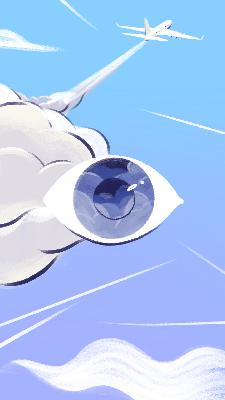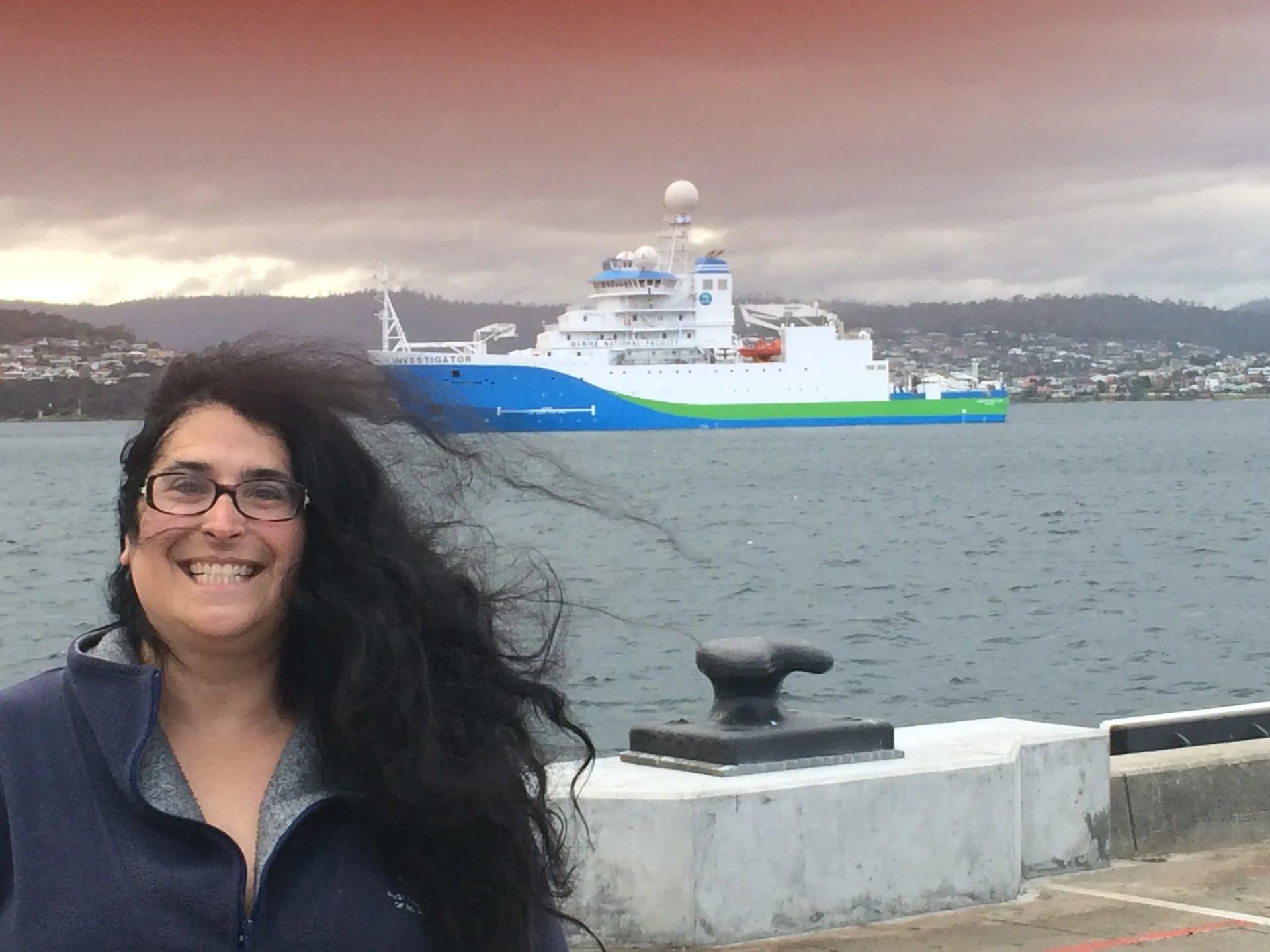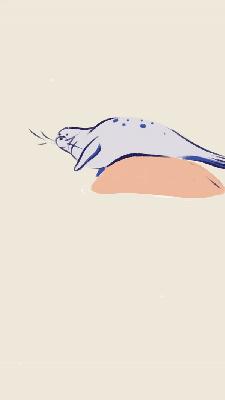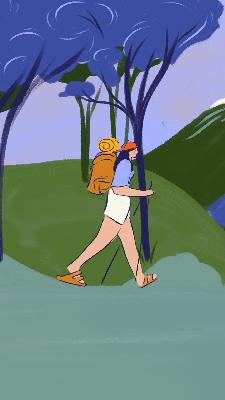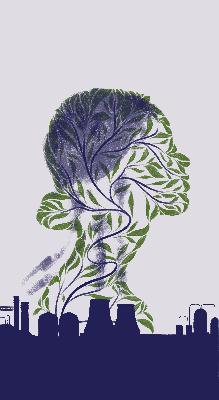Discover Earth to Humans
Earth to Humans

 Earth to Humans
Earth to Humans
Author: Earth to Humans Podcast
Subscribed: 11,841Played: 43,423Subscribe
Share
© The Wild Lens Collective
Description
Earth to Humans is a bi-weekly interview series featuring conversations with some of the amazing humans who are fighting for a brighter and more just future for all of Earth's inhabitants.
https://earthtohumanspod.com
Join private conversations with top authors and access exclusive bonus content!Hosted on Acast. See acast.com/privacy for more information.
earthtohumanspodcast.substack.com
307 Episodes
Reverse
Hi friends,Welcome back to the Earth to Humans podcast. It’s been a minute, but we’re back! I’m senior producer Sarinah Simons, and today, on Earth Day, I’m here with a little season update and some reflection.Yes, we are finally back from our break. Stepping away gave us time to rest, reflect, and sort through the noise—both out in the world and in our own heads. However, none of us quite anticipated the world we would be returning to.While we typically start each season on Earth Day with a renewed sense of purpose, motivation, and curiosity, I’ll be honest: this year hardly feels like a celebration.There’s this weight on everything right now, right? Climate and humanitarian grief, ecosystem collapse, a hostile administration…So, truly, if you’re feeling degrees of that heaviness, you’re not alone. I promise, we’re right there with you.I remember a time, though, when Earth Day felt a little more hopeful. At least, I remember when we were talking about projections and tipping points, and it at least felt a little farther off. A time when we were hopeful because there were good people out there working towards solutions, and while projections looked alarming, there was a sense that we could and would figure this out. But today doesn’t feel like that at all to me, and maybe that’s just me! But I can’t help but feel in certain ways that the climate crisis is now, and we are running out of time. I could recite a laundry list of all the current emergencies we’re all facing and reading about, but that often feels like preaching to an already overwhelmed and exhausted choir…so I’ll spare you all the details of what’s currently keeping me up at night.So, that begs the question: why are we still doing this podcast?Honestly? Because we need each other. And we need stories. Not just data. Not just dire warnings (though yes, it’s important to highlight those too), but stories that remind us we’re not alone. That other people care. That fighting for a livable future is still possible. Still worth it.So this season, we’re doing things a little differently. Yes, we’ll still have the scientists, the authors, the activists—the people doing powerful work on the frontlines of climate and conservation. But we’re also bringing ourselves to the mic a little more.We want to talk more openly about what it feels like to live in this moment. Not just what we’re doing, but how we’re doing. The hope, the burnout, the weird little coping rituals. The late-night spirals and the tiny, absurd joys that keep us going.We’re pulling the curtain back a bit. More check-ins between hosts. More behind-the-scenes messiness. Because if we’ve learned anything in the last few years, it’s that pretending to have it all figured out is exhausting—and pretty unhelpful in my opinion.So, if you’ve been feeling the weight of it all…welcome. If you’re still searching for ways to make a difference, or just survive the news cycle without disappearing into the void, you’re in good company. And we’re so glad you’re here.New episodes will be dropping soon, and we’ve got some incredible guests lined up this season. Stay tuned. Stay weird. Stay mad. And stay connected.And hey—Happy Earth Day 🌎Let’s make this one count.-Sarinah Get full access to Earth to Humans Podcast's Substack at earthtohumanspodcast.substack.com/subscribe
Happy (almost) New Year! We wanted to take a look back on all of our favorite Earth to Humans episodes that we produced in 2024. From redefining wilderness to the deepest parts of the ocean, the stories we got to tell this year continue to inspire and motivate us, especially as we prepare to navigate a murky future filled with uncertainty and inevitable environmental hurdles. Hannah, Matt and Sarinah shares their thoughts on the episodes that make this challenging work worthwhile, and a few of them might surprise you!We know it can be hard, but its more vital than ever that we stay engaged, tuned-in and laser focused on our environmental goals into 2025. Here on the pod, we’ll be with you every step of the way and we can’t wait to share new stories that we’ll be cooking up ahead of our return in the Spring. Cheers! Get full access to Earth to Humans Podcast's Substack at earthtohumanspodcast.substack.com/subscribe
You know, it's amazing how despite this current age of information, we sometimes get lost in what’s actually true and struggle to wade through the constant barrage of misinformation. It sometimes feels like everyone's got a theory for something, whether it’s the results of the 2016 election, the source of COVID 19 or something more harmless like UFO’s and the existence of the Loch Ness Monster.We see them everywhere online and, in the world, popping up in conversations with coworkers and overheard standing in line for coffee. So, it’s no wonder it can sometimes be hard to untangle this complex web of facts and falsities. My guest today has wrangled conspiracy theories head on with a level head and persuasive evidence. Mick West is a science communicator, author, and one of the leading voices in debunking misinformation. As the creator of Metabunk.org and author of Escaping the Rabbit Hole, Mick has dedicated his work to exploring how conspiracy theories take root, why they resonate, and how we can counter their influence with evidence-based reasoning.From claims of secret geoengineering plots to the outright denial of climate science, conspiracy theories have a powerful ability to misinform, distract, and derail meaningful progress. In this conversation, we’ll uncover the real-world impacts of these narratives on climate science, public trust, and environmental policy—and discuss what we can do to move toward a more informed future.https://www.metabunk.orghttps://www.contrailscience.comhttps://youtube.com/mickwest Get full access to Earth to Humans Podcast's Substack at earthtohumanspodcast.substack.com/subscribe
We don’t have all the answers, but the Earth needs us now more than ever before. Get full access to Earth to Humans Podcast's Substack at earthtohumanspodcast.substack.com/subscribe
I recorded this interview with Nathaniel Stinnett, the founder of the Environmental Voter Project, in the summer of 2016. While there are lots of differences between this election cycle and that of 2016, the ideas that Nathaniel shared remain relevant and important today. The Environmental Voter Project has dramatically expanded it’s capacity and scope since 2016, and now has an expansive reach, with ground operations in 19 states and more than 10 million potential voters contacted.Earth to Humans has changed a lot since 2016 as well. When we released this episode, the podcast was still called “Eyes on Conservation” and I was the sole producer, churning out episodes almost every week. When I launched the podcast back in the fall of 2014, I imagined it as an outlet to share the audio from unused interviews originally recorded for various documentary projects, but it quickly evolved into something much more than that. I feel extremely fortunate to now have the opportunity to work with an amazing team of producers that bring a far more diverse and interesting slate of stories to the show than I would be capable of producing on my own. But when prompted to dig into the archives for this week’s episode, I realized that our show’s humble beginning took place almost exactly 10 years ago.So cheers to ten years of podcasting at the Wild Lens Collective! I hope that you enjoy this foray into our archives as much as I did! Happy voting.-Matt Podolsky Get full access to Earth to Humans Podcast's Substack at earthtohumanspodcast.substack.com/subscribe
I discovered Lisa while reading a book not penned by her - Phosphorescence by Julia Baird. In the book, Julia is faced with a life threatening illness, and goes on a journey to cultivate ‘inner light’ which sees her, amongst many other things, meeting up with jellyfish and fluorescence expert Dr Gershwin. She tells a very brief summary of Dr Gershwin’s life - her incredible accolade of identifying over 200 species of jellyfish, her experience with homelessness, and her adulthood autism diagnosis.I remember putting the book down for a moment and thinking what an incredible story Lisa seemed to have, so I looked her up online and discovered that this story was barely scratching the surface. I bought Lisa’s first book, Stung, and learned so much about jellyfish and their role within their ecosystem that I discovered a newfound appreciation for them, and an understanding about why someone would dedicate so much of their career researching them. I decided to reach out to her to see if she would be a guest on Earth to Humans and, to my delight, she said yes!Cut to six month’s worth of emails later - she is based in Tasmania, Australia and I am based in Scotland, which made scheduling tricky - we finally found the time to chat. I could’ve spoken to Lisa forever. We explored her amazing journey from high school dropout to finishing her second phd, and how receiving an aspergers diagnosis made everything suddenly make sense for her. Artwork by Jasmine HortopLisa is a truly open book, and speaking to someone who is so honest about their experiences with neurodiversity, depression and finding their ‘ert’ left me feeling like the world would be a much better place if we all lived with such unapologetic authenticity. I have so much admiration for this amazing woman, I’m so excited to share this episode.Watch a snippet of the episode of ‘You Can’t Ask That’, featuring Lisa.In this episode, Lisa mentions the book she read that gave her insight into Aspergers and led to her getting a diagnosis. The book was by Dr Tony Attwood - check out his books here.If you’re visiting Tasmania and want to book onto one of Lisa’s Glow Tours, you can find out more on her website. Get full access to Earth to Humans Podcast's Substack at earthtohumanspodcast.substack.com/subscribe
Steve is bursting with enthusiasm for the Maine woods and the Appalachian Mountain Club’s efforts to protect this area. He grew up right along the border of Maine’s unincorporated territories, a vast stretch of uninhabited, but privately owned, forest land that covers nearly half the state. He always had a deep bond with this land, but was told while growing up that he’d have to leave if he wanted to earn a good living or follow his passion. That turned out not to be true, as an opportunity to work for the Appalachian Mountain Club arose that actually valued his preexisting connection to the region and to the area’s communities.The Maine Woods Initiative is a unique and vast project. The Appalachian Mountain Club has bought over 114,000 acres of land in the region, but even though its privately owned, they are managing it based on a public land model. They’ve created numerous recreational opportunities, they’ve initiated sustainable logging operations working closely with local communities, and they’ve restored watersheds, re-establishing the only wild Atlantic Salmon run on the entire Eastern seaboard. It’s an example of land conservation and protection that values and includes human communities - Steve is working to protect not just ecosystems, but cultural lifeways and economic viability. Get full access to Earth to Humans Podcast's Substack at earthtohumanspodcast.substack.com/subscribe
It was 2019 when I first began working on The Invisible Mammal with director Kristin Tieche. The past five years have been a whirlwind journey, but now we get to bring this story to life for the first time. The editing process on a documentary like The Invisible Mammal, which was shot over five years in a vérité style, is truly special. For the first time we get to see which story ideas work and which ones don’t. We establish a pacing and a tone for our film, and work hard to bring out the nuances of our character’s personalities. In today’s bonus episode of Earth to Humans, Kristin and I discuss what it’s like to be at this stage of the filmmaking process, share updates on some upcoming events featuring sneak peak screenings of selected work-in-progress scenes, and discuss our plans for the future.Learn more about The Invisible Mammal here: https://www.theinvisiblemammal.com/Learn more and register for our October 1st screening event in central CA: https://www.eventbrite.com/e/bat-movie-benefit-at-the-lark-theater-registration-998015740947?aff=oddtdtcreator -Matt Podolsky Get full access to Earth to Humans Podcast's Substack at earthtohumanspodcast.substack.com/subscribe
In this episode of The Earth to Humans Podcast, the Pod gets POLITICAL. Specifically, the politics and dangers of Project 2025 and the looming chaos of another Trump administration.We delve into the far-reaching impacts of another potential Trump presidency on the environment here in the U.S. and how shifting U.S. policies might influence countries around the world, with special insight on the United Kingdom.The conversation extends to environmental and social justice policies, where we discuss the implications of diverging climate goals and the long term effects on already fractured international environmental collaborations. Fractures that could ripple across the globe for years to come.We’re here to unpack it all. Get full access to Earth to Humans Podcast's Substack at earthtohumanspodcast.substack.com/subscribe
After reading the synopsis for the film Kelp! I headed straight to their website - it featured so many things I’m passionate about that I had to watch it immediately! I hit the play button, sat back and enjoyed half an hour of pure hope and joy - something it can sometimes be a bit tricky to find within the environmental space. I was aware of seaweed farming being a big deal in South East Asia, as I have seen vast coastal areas that are home to this form of agriculture, but I was surprised to learn that it was very much booming in the UK. The film goes into great detail about how amazing kelp is - it’s a habitat for numerous marine species, its potential to sequester carbon is unbelievable, it is a highly nutritious superfood, and it can be used as an alternative to plastic which is completely safe for humans and the planet.Artwork by Jasmine HortopNot only was I in awe of kelp itself, but also the team who made this film. I’ve heard of the great lengths production teams have gone to to ensure their films do not create more environmental problems that they’re attempting to solve, but the extreme efforts of the Kelp! team became as much of an integral part of the story as the kelp itself. I’m not going to ruin the film by going into too much detail, but it’s definitely the only production I’ve ever been aware of being filmed entirely on a sailboat! We somehow came up with the phrase ‘hungry for joy’ throughout the interview, and it’s something I regularly experience, with the greatest of appetites. If you’re looking for a big dose of hope and inspiration, I’d certainly recommend heading straight to the Kelp! website and getting exactly what you need! Scroll down to find the trailer, and a here’s a (free) link to the full film. I hope you enjoy it as much as I did!By Hannah Mulvany Get full access to Earth to Humans Podcast's Substack at earthtohumanspodcast.substack.com/subscribe
Anthony Cohen is a historian, author and expert on the Underground Railroad who has taken a truly unique approach towards researching and teaching history. His career was launched in 1996 when he traveled 1,200 miles by foot, boat and rail to retrace one of the routes of the Underground Railroad.Since completing this remarkable journey, Anthony has developed his expertise in experiential history, establishing a living history center that teaches people about slavery and life on an 1850s plantation. His work has been featured in a number of documentaries, most recently the series, “Rooted Wisdom”, about nature’s role in the Underground Railroad. Get full access to Earth to Humans Podcast's Substack at earthtohumanspodcast.substack.com/subscribe
Welcome to part 2 of our series on HPAI aka highly pathogenic avian influenza.Today we continue our deep dive into the fascinating yet unsettling world of avian influenza. In part 1, we explored how these viruses leap from birds to marine mammals, unraveling their ecological and health implications. This time, we shift our focus from New England to Argentina.Joining us is Dr. Agustina Rimondi, a scientist known for her work on the molecular epidemiology of avian influenza. Dr. Rimondi's research delves deep into the science of how these viruses evolve and spread, providing critical insights into our ongoing understanding of what these viruses are and how they might impact us.In this episode, we'll get into the weeds of the science behind avian influenza. Dr. Rimondi will share her experiences and findings from the field, shedding light on the intricate mechanisms of virus transmission and adaptation. We'll also discuss the broader implications of her work on other species, including us stubborn humans. Get full access to Earth to Humans Podcast's Substack at earthtohumanspodcast.substack.com/subscribe
Today we embark on the first of a two-part deep dive into a topic that's as fascinating as it is unsettling: avian influenza.Joining us is Dr. Wendy Puryear, a leading virologist who’s pioneering work on the H5N1 strain of avian influenza has revealed some startling truths about how this virus spreads and the profound impacts it has on wildlife, particularly marine mammals.In this episode, we'll explore the intricate dance of viruses as they leap from birds to mammals, mammals to mammals, and maybe even mammals to birds, uncovering the ecological and health implications of these cross-species transmissions. We'll hear from Dr. Puryear about the challenges and triumphs of tracking these invisible threats and the collaborative efforts needed to combat them.This is part one of our exploration into avian influenza. Get full access to Earth to Humans Podcast's Substack at earthtohumanspodcast.substack.com/subscribe
On this episode, we’re re-airing an episode we really think you will love. Today, Sarinah tackles female solo hiking from the perspectives of 5 women as she tries to make sense of managing both the physical and mental fears of hiking alone, but also the beauty of mentorship and prioritizing joy in the outdoors. The women in this panel range from environmental scientists to travel bloggers, teachers to mothers, but all with individual expertise and an accomplished list of hikes that should intimidate the hell out of you. Get full access to Earth to Humans Podcast's Substack at earthtohumanspodcast.substack.com/subscribe
Hannah is joined by Dr Aura Goldman - a psychotherapist who, amongst other accolades, specialises in eco-anxiety and the plethora of other climate and environmental emotions. They explore different case studies of environmentalists who are experiencing various environmental emotions, and Dr Goldman gives some fantastic tips on how to cope. Get full access to Earth to Humans Podcast's Substack at earthtohumanspodcast.substack.com/subscribe
I first came across the work of Laura Waterman while conducting research on the origins of the Appalachian Trail. As many of our listeners are surely aware by now, I completed a thru-hike of the Appalachian Trail in 2022, and am currently working on a 10-episode documentary radio series about the AT’s history and cultural influence in partnership with New Hampshire Public Radio. I was seeking information about the history of trail building in the Northeastern US, where the first modern long distance hiking trails were born, and I found everything that I was looking for in “Forest and Crag” by Laura and Guy Waterman.“Forest and Crag” is a comprehensive history of Mountain climbing in the Northeast - it is dense with information, but with a writing style that is accessible and compelling. Despite being first published over 35 years ago, it remains the best resource on this topic by a long shot. I was looking for someone to interview for my podcast series, so I also conducted research on the authors of this book - Laura and Guy Waterman. What I found was a story even more fascinating than the history of trail building laid out in “Forest and Crag”.I began reading Laura Waterman’s first memoir, “Losing the Garden”, and the story of Laura and Guy’s truly unique life together began to unfold in front of me. While the two of them were writing “Forest and Crag”, they were living in a rural Vermont homestead in a cabin they built themselves with no electricity or plumbing. They lived like they were in the 19th century for almost 30 years, until Guy’s depression intensified, and he decided to take his own life in the year 2000.But this wasn’t a typical suicide. Guy drew Laura into the planning of this effort to take his own life, and Laura, seeing no other option, went along with Guy’s plan. Guy ultimately chose to die by exposing himself to the elements on a winter hike of the Franconia Ridge - the site of the iconic New Hampshire ridge-line trail that Laura and Guy had maintained for almost 20 years.Laura published her first memoir “Losing the Garden” in 2005, but felt that she had left unanswered questions about her decision to go along with her husband’s plan to commit suicide. Her second memoir, published just a few months ago, “Calling Wild Places Home”, seeks to answer these questions, adding depth to the story of Laura’s truly unique life. Now 84 years old, Laura shares her reflections on the past, on aging, and the evolution of her writing style. It was truly and honor for me to have the opportunity to speak with Laura Waterman, and I hope that you enjoy the conversation as much as I did!-Matt Podolsky Get full access to Earth to Humans Podcast's Substack at earthtohumanspodcast.substack.com/subscribe
Imagine descending into the abyss, leaving behind the sunlit waters and plunging into the dark, mysterious depths of the ocean. Here, sunlight fades away, and the pressure increases with every meter. This is the realm of the deep sea, an environment so extreme and alien that it's often compared to outer space.Under the weight of that much water and so far from the surface, you might envision the truest definition of darkness. But what if I told you there was an abundance of light just at the edge of darkness. Light that we are just beginning to understand.Dr. Edith Widder has dedicated her career to exploring these under-explored depths. She was one of the first scientists to capture the mesmerizing phenomenon of bioluminescence in its natural habitat. Bioluminescence is the emission of light by living organisms, a survival mechanism in the pitch-black ocean depths. It creates an otherworldly spectacle where creatures use light to communicate, hunt, and evade predators.From the hypnotic glow of jellyfish to the pulsing firework displays of deep-sea fish, bioluminescence transforms the dark ocean into a place of living light. Dr. Widder’s groundbreaking work not only showcases the beauty of these glowing organisms but also helps us understand the vital ecological roles they play.Join us as we journey with Dr. Edith Widder to uncover the secrets of the deep sea. Discover how these extraordinary light displays serve as both a beacon and a camouflage in the vast, dark expanse of the ocean. She shares her incredible experiences and insights into one of the most captivating phenomena of the natural world.Dr. WidderORCA Get full access to Earth to Humans Podcast's Substack at earthtohumanspodcast.substack.com/subscribe
In my echo chamber, gender, race, nationality, and gender are intersections that are spoken about and how they relate to environmentalism (still nowhere near frequently enough), yet one that was completely absent until recently was disability. I only truly became aware of this when I saw an article pop up featuring my guest on next week’s episode, who had gone to COP26 to ensure the voices of those living with disabilities were involved in climate discussions. Umesh Balal Magar is a young Nepalese disability and climate campaigner who, when he’s not working on improving climate related-water issues in Nepal, is fighting for more inclusive and equitable climate discussions and legislation.Artwork by Jasmine HortopHis story is so powerful and I wanted to use this platform to share it, to do something to amplify Umesh’s important messages and calls to action, as well as those of others working within this space.When I started researching this topic, I instantly became aware of a word that I hadn’t encountered before - eco-ableism. This is described by Friends of the Earth Scotland as, ‘‘a failure by non-disabled environmental activists to recognize that many of the climate actions they’re promoting make life difficult for disabled people’. They also listed examples, such as:- banning plastic straws without accepting that some disabled people need them to drink safely and conveniently- removing disabled parking bays to make way for cycle lanes- promoting active travel without realising that some disabled people cannot walk, wheel or cycle.These are very much local examples of eco-ableism within the UK and most probably many other countries too, but the reality is that it is very much a global issue.Something that Umesh raised during our episode, which horrified me, was that disabled people are currently completely left out of plans for disaster response, such as during evacuations. Umesh and his community are fighting for legislative change that will ensure that this does not continue, but progress is frustratingly slow and time is not on humanity’s side when it comes to climate change.Here’s a few resources that go into more detail about eco-ableism, as well as a written interview with Umesh.Friends of the Earth Scotland - Eco Ableism and the Climate MovementDisability Rights UK - Climate changeCurious Earth - What is Eco-ableism and how can we counter it?British Council - Discussing inclusive climate action with Umesh Balal Magar Get full access to Earth to Humans Podcast's Substack at earthtohumanspodcast.substack.com/subscribe
I first came across Erin’s work at Terra Incognita Media a few years ago when I was doing research on National Parks and the influence of John Muir. I was on a learning journey that would lead me to a series of revelations about the history of environmentalism and the generational harm caused by John Muir and his ideas.I had recently interviewed Mark David Spence, the author of “Dispossessing the Wilderness”, for an episode of Earth to Humans. Spence’s book exposes the deeply racist origins of the National Park system, as well as the role played by John Muir in advocating for the forced removal of indigenous people from what would become Yosemite National Park. After speaking with Mark and reading his book, my perspective on National Parks, and protected landscapes in general, made a dramatic shift. I was beginning to understand that these treasured “wilderness” landscapes were a fabrication of white supremacy. The land that makes up these protected parks was inhabited by Indigenous people, as it had been for thousands of years previous, and the establishment of National Parks provided the US government with a convenient excuse to forcibly remove these people from their homelands. These new National Parks were specifically designed, developed and established for wealthy, white visitors.During the lead up to Yosemite receiving “protected” park status, there was a vigorous debate within the budding conservation community in California over whether the Indigenous community that called the Yosemite Valley home should be allowed to stay. John Muir was quite vocal in his opposition to allowing these Indigenous people to remain in the newly created park. He used his skill as a writer to bring others over to his side, and his success set a precedent for land protection that is maintained to this day. Indigenous people all around the globe have been, and continue to be, forcibly removed from their homelands in the name of conservation and land protection, as documented by journalist Mark Dowie in his book, “Conservation Refugees” (check out our interview with Mark Dowie here)Erin’s article about John Muir referred to him as, “a toxic masculine, egocentric, eco-jock” and encouraged her readers to share posts tagged #FuckYouJohnMuir. I was eager for this message, and began to dig back through many of Erin’s previous posts on Terra Incognita’s website. What I found was an open dialogue about Erin’s path towards becoming a advocate for an anti-racist, anti-capitalist brand of environmentalism. Her willingness to talk about the missteps and mistakes that she made along the way made her perspective all the more appealing to me. I was on a similar learning journey, making my own embarrassing mistakes, and the insight provided by Erin’s writing was extremely helpful to me.I hope that you gain the same level of insight and inspiration from Erin’s work as I have! I’m incredibly excited to share this interview with all of you!-Matt Podolsky Get full access to Earth to Humans Podcast's Substack at earthtohumanspodcast.substack.com/subscribe
I’m super excited to bring you this bonus episode of the podcast! We’re still a few months away from launching our new season of Earth to Humans - that will happen in April for Earth Week - but I wanted to feature this conservation with the director of our latest Wild Lens Collective co-production, Children of the Wolves. Get full access to Earth to Humans Podcast's Substack at earthtohumanspodcast.substack.com/subscribe




